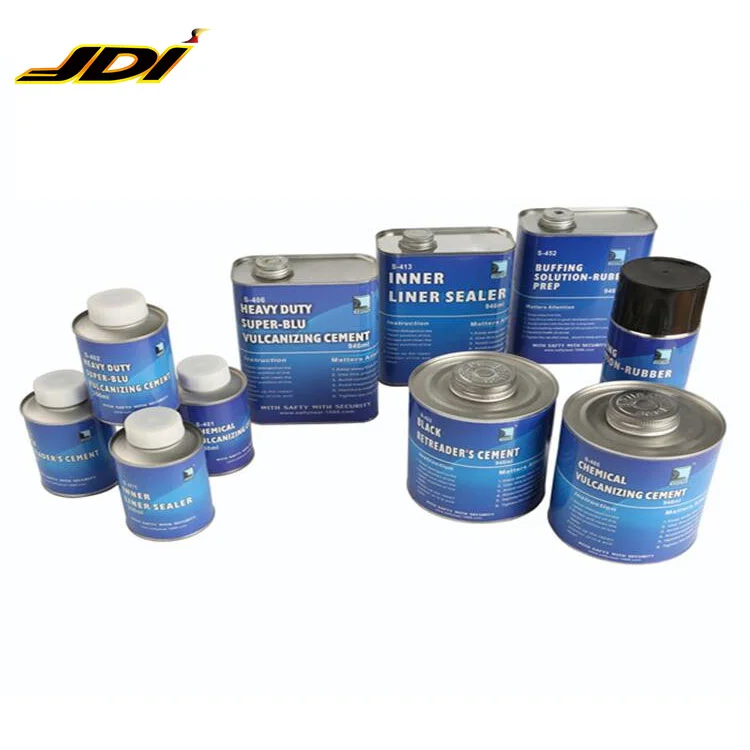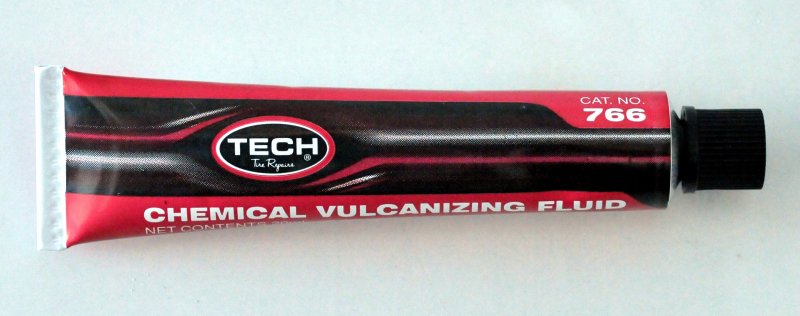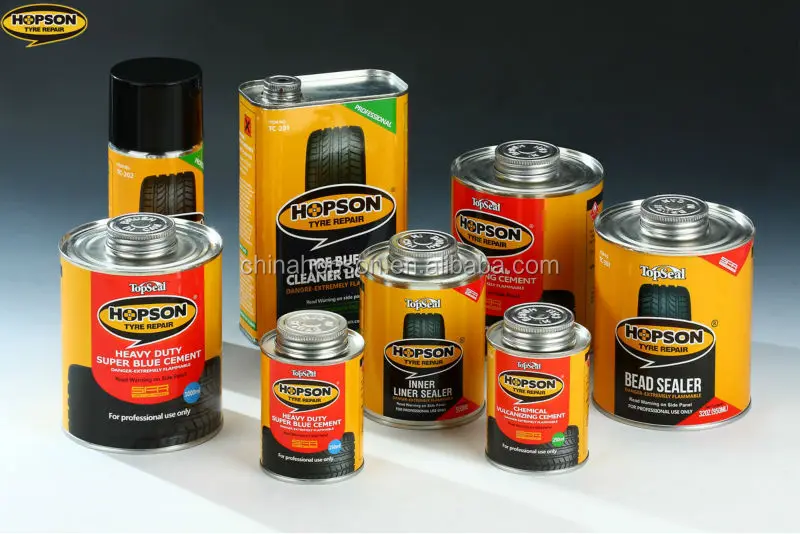| Item Number | Unit of Measure | Box Quantity | Shelf Life | ||||||
|---|---|---|---|---|---|---|---|---|---|
| 760 | EA | 1 | 2 years | ✔ | ✔ | ✔ | ✔ | ✔ |
Commonly used with: UL6 UNI-SEAL ULTRA 1/4″ (6mm), BOX OF 14, UL6S UNI-SEAL ULTRA STEM 1/4″ (6MM), BOX OF 20, CT-10 1-3/4″x3″ (45mmX75mm), BOX OF 20
TECH fast-drying Chemical Vulcanizing Fluid works with both TECH gray and Thermacure cushion gums to bond tire and tube repairs in hot or cold applications. Recommended dry time is 3-5 minutes.
UPC: 743813141002
CHEM.VULCANIZING FLUID 8OZ
Other related results:
products.techtirerepairs.com
760 - CHEMICAL VULCANIZING FLUID (8 OZ) - TECH Ecommerce
Be sure to use with one-piece, stem and TECH tire repair materials. TECH 760 Vulcanizing Fluid. Download Safety Data Sheet > ...
techtirerepairs.com
SAFETY DATA SHEET
760, 761, 762, 763, 764, 765, 766, 767. Supplier's details. : CHEMICAL VULCANIZING FLUID. Relevant identified uses of the substance or mixture and uses ...
techtirerepairs.com
SAFETY DATA SHEET
Feb 27, 2014 ... : CHEMICAL VULCANIZING FLUID. : 760EL, 761EL, 762EL, 763EL, 764EL, 765EL, 766EL, 767EL. : rubber adhesive. : Liquid. : 760EL, 761EL, 762EL, ...
: rubber adhesive. : Liquid. : 760EL, 761EL, 762EL, ...
products.techtirerepairs.com
CT72AR - CT72AR THERMACURE ARAMID OTR CROWN REPAIR ...
CT72AR - CT72AR THERMACURE ARAMID OTR CROWN REPAIR 13 3/4″X30″ (345mmX760mm), BOX OF 1 · TECH Centech Radial OTR repairs are reinforced with Aramid cord for ...
products.techtirerepairs.com
TOR9C - TOR BIAS CLOTH OTR REPAIR 30" (760mm), BOX OF 1 ...
TOR9C - TOR BIAS CLOTH OTR REPAIR 30″ (760mm), BOX OF 1 · TECH Off-Road (TOR) repairs have specially designed plies that dissipate stress and provide maximum ...
Specifically designed for the vulcanization of tube patches, valve patches and rubber-based tube valve repair units.
| Part No. | Description | Size | Box/Qty | |
|---|---|---|---|---|
| 201 | Cold Vulcanizing Fluid | 25 g tube | 1 | |
| 202 | Cold Vulcanizing Fluid | 50 g tube | 1 | |
| 203-F | Cold Vulcanizing Fluid ((flammable), with brush top | 8 oz. can | 10 | |
| 204-F | Cold Vulcanizing Fluid (flammable) | 32 oz. can can | 10 |
The key to REMA TIP TOP's exclusive Blue Bonding System, Special Blue Cement (flammable) creates a nearly indestructible bond between tire and repair unit. REMA TIP TOP's newest Special Blue Cement (flammable) is free of CFC and aromatic compounds. Specifically designed for the application of REMA TIP TOP Radial, Bias-Ply and Universal, Minicombi & RemaStem repair units. Use for chemical installation of REMA TIP TOP blue bonding layer repair units, Blue Floater Gum and chemical vulcanizing compounds.
| Part No. | Description | Size | Box/Qty | |
|---|---|---|---|---|
| BL-8F | Special Blue Cement (flammable), with brush top | 8 oz. can can | 10 | |
| BL-32F | Special Blue Cement (flammable) | 32 oz. can | 10 |
Specifically designed for the chemical application of REMA TIP TOP Radial (RAD) and Bias Ply (PN) repair units, optimizing the service performance of long haul earthmover and agricultural tires.
| Part No. | Description | Size | Box/Qty | |
|---|---|---|---|---|
| OTR-F 700 | OTR-F Cement | 700 g can | 10 |
Specifically designed for heat cure repair processes utilizing REMA TIP TOP repair units and uncured MTR rubber products.
| Part No. | Description | Size | Box/Qty | |
|---|---|---|---|---|
| MTR-F 700 | MTR-F Solution (flammable) | 700 g can | 10 |
цемент HOPSON изготавливается по специальной формуле, которая делает резиновую накладку прочно прилипкой к шине.
Химический вулканизирующий цемент HOPSON изготовлен по специальной формуле, которая может сделать резиновую накладку вулканизированной, чтобы прочно прилипнуть к шине. Используется в вулканизировании. Этот химический вулканизирующий цемент содержит ускорители, при контакте с лицевой смочкой и любым из наших ремонтных блоков или вставок, начнет вулканизирующий процесс сразу. Он негорючий и подходит для длительного хранения, что делает его простым и безопасным для использования и хранения.
Для удобства использования кисть в банке (оловянном).
НАПРАВЛЕНИЯ
1. ТЩАТЕЛЬНО ОЧИСТИТЕ большую зону вокруг травмы с помощью раствора для полирования резиновой подготовки и скрепера с внутренней гильзой.
2. УЧАСТОК ремонта, подготовленный ДЛЯ РЕМОНТА, с бархатистым гладким текстурой RMA# 1. Не выполняйте очистку полировальный раствор.
3. Зона, подготовленная ЦЕМЕНТОМ. Хорошо замалярно работать в резину, не замазая. Дайте цементу полностью высохнуть в течение 3-5 минут.
4. ВЫПОЛНИТЕ РЕМОНТ В соответствии с инструкциями, приведенными в материалах для ремонта, которые необходимо использовать.
ХРАНИТЕ В НЕДОСТУПНОМ ДЛЯ ДЕТЕЙ МЕСТЕ.
ЕСЛИ КОНТЕЙНЕР НЕ ИСПОЛЬЗУЕТСЯ, ДЕРЖИТЕ ЕГО ЗАКРЫТЫМ.
Не упустите возможность проверить весь ассортимент продукции для ремонта шин.
РЕМОНТ ШИН HOPSON всегда удивляет вас!
Профиль компании
Ningbo Hopson Chemical Industry Limited - специализированная компания по производству клеевых клеев.
Мы прошли сертификацию по стандарту Американского ASTM, европейскому стандарту EN71, системе сертификации SGS и системе управления качеством ISO9001:2000.
Мы производим преимущественно цианоакрилатные клеи, клеи для ногтей, клеи для век, эпоксидные смолы, цементы для ремонта шин и другие клеи. У нас более десяти лет опыта в области исследований и разработок клеев высокой собственности.
Наша продукция ориентирована на защита окружающей среды и высокое качество. Мы можем предоставить продукты, соответствующие вашим строгим требованиям.
Выставка
NINGBO HOPSON CHEMICAL INDUSTRY CO.,LTD. Ежегодно посещает выставки в США, Германии, Дубае, арабских, Индии, Шанхае и т.д.
Многие постоянные и новые клиенты посетили нас и заинтересовались нашей продукцией. Вы всегда можете найти что-то новое и другое на
наш стенд.
Наши прибыльные продажи и техническая команда будут там предлагать наш лучший сервис для вас.
ЧАСТО ЗАДАВАЕМЫЕ ВОПРОСЫ
В: Вы торгуете компанией или производителем?
О: Мы производитель и торговая компания, поэтому мы можем обеспечить и хорошую цену, и отличное обслуживание.
В: Могу ли я использовать НАШ ЛОГОТИП?
Ответ: Да, если клиенту требуется большое количество, мы можем использовать дизайн клиента.
В: Вы предоставляете образцы? Это бесплатно или дополнительно?
Ответ: Да, образец свободен, если он есть на складе, но клиент оплачивает груз.
В: Сколько времени у вас срок поставки?
Ответ: Обычно это 5-10 дней, если товар есть на складе, или срок поставки 20-30 дней.
В: MOQ?
Ответ: Разные продукты отличаются, мы приветствуем переговоры.
В: Что насчет послепродажного обслуживания?
Ответ: В целом, мы имеем гарантию качества на 2 лет, за исключением некоторых специальных продуктов.
 Cement for vulcanization. Chamber vulcanization. Cement for dry cleaning of chambers.
Cement for vulcanization. Chamber vulcanization. Cement for dry cleaning of chambers. Cement for vulcanization
Let's start with the camera. This is the simplest rubber "donut" with a device for pumping and holding several atmospheres of ordinary air inside. Therefore, the two main troubles that do not allow the camera to cope with its functions are punctures and cuts. Both those and others are treated by applying patches followed by hot (much less often cold) vulcanization. But the recipe itself often looks like a shamanic potion.
First, the perimeter of the cut is marked with chalk, after which the edges are rounded. So that after applying the patch, the opposite edges of the cut do not come into contact, since their friction with a simultaneous increase in temperature when the car is moving is fraught, at best, with repeated repairs. Raw cut edges do not accept the cold vulcanization method at all - a local increase in temperature during friction completely disables the patch.
The second step is choosing a patch. The main requirement is that the patch should extend at least 2 cm in each direction from the edge of the cut, and be 1.5-2 times the length of the damage in length. So, for the smallest puncture, a patch with an index of 11-022 is required, damage from 3.5 mm will already require a patch of 11-031.
The third step is to treat the surface of the chamber with a buffer cleaner. It only helps cleaning and prevents dirt from penetrating deep into the structure of the chamber. Lheubvb
Then comes the abrasive action. The physics is simple - the clean, rough surface of the chamber is ideal for close contact with the future patch. The speed of the emery is decent, the temperature at the point of contact is not the most tolerable, as a result we have at least undulating swelling, as a maximum - rubber overheated and melted to the consistency of plasticine. The optimal solution can be considered a pneumatic drill with a set of necessary cutters and nozzles, but due to its high cost, such equipment is not available to everyone. Or maybe it is available, but as long as there is a demand for antiquated methods, why buy it?
Or maybe it is available, but as long as there is a demand for antiquated methods, why buy it?
The next step is to apply the patch itself and then vulcanize it. Cold vulcanization is a chemical reaction between the components of the adhesive applied to the chamber and the active (usually white) layer of a special patch. The whole process, including preliminary processing of the camera, takes no more than five minutes, but such a patch does not differ in exponential durability. Its best use is temporary wheel repairs away from specialized workshops.
More traditional, hot vulcanization is an order of magnitude cheaper, 40% more efficient, but takes at least 20 minutes with all preparatory operations. First, the hot-curing adhesive must be allowed to dry. Secondly, a raw rubber patch (in this case playing the role of that very “white layer”) requires careful smoothing before entering the vulcanizer. Often, a piece of the old camera is added on top to "strengthen", but this does not make much sense if the patch is properly installed. On the contrary, if the patch is damaged again, it will not be easy to disassemble the resulting sandwich. Not to mention, re-cleaning the surface and removing the top layer will make the camera even thinner and clearly not good for its durability.
On the contrary, if the patch is damaged again, it will not be easy to disassemble the resulting sandwich. Not to mention, re-cleaning the surface and removing the top layer will make the camera even thinner and clearly not good for its durability.
The average hot cure rate is approximately 1 mm every four minutes, including the thickness of the chamber itself. The process of vulcanization of raw rubber begins when heated at about 90 degrees and reaches its optimum value at a temperature of 147 degrees. The mark of 160 is critical, its excess inevitably leads to shrinkage and burns of rubber. The same result will be obtained if the camera is overexposed on the vulcanizer. Alas, most vulcanizers in tire shops do not have timers, let alone working temperature controllers, and the vulcanization process is controlled by the masters “by eye”. And the vulcanization parameters themselves (time, temperature) were obtained, as a rule, by trial and error, and the clients of tire shops act as test subjects.